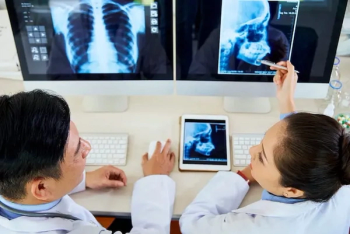Photon-Counting Computed Tomography: Eleven Takeaways from a New Literature Review
In a review of 155 studies, researchers examined the capabilities of photon-counting computed tomography (PCCT) for enhanced accuracy, tissue characterization, artifact reduction and reduced radiation dosing across thoracic, abdominal, and cardiothoracic imaging applications.
In comparison to conventional computed tomography (CT), photon-counting computed tomography (PCCT) offers diagnostic advantages at significantly reduced radiation dosing across a variety of imaging applications, according to a new review of 155 studies.
Here are 11 takeaways from the literature review, recently published in the
1. Citing a comparative study with PCD-CT and EID-CT in diagnosing acute pulmonary embolism (PE), the review authors noted no significant difference in mean attenuation within pulmonary arteries. They also pointed out a 61.4 percent reduction in artifacts with PCD-CT in contrast to dual-energy EID-CT and an overall 48 percent reduction in radiation dosing.
2. The review authors pointed out that PCD-CT has demonstrated a greater than 3.5-fold lung density accuracy over EID-CT in differentiating between emphysematous regions and healthy lung tissue.
3. For CT pulmonary angiography, the use of PCD-CT in ultra-low dosing protocols offered comparable or superior image quality in comparison to standard radiation dosing with EID-CTPA, according to the review authors.
Assessing the Impact of PCCT in Abdominal Imaging
4. For the use of PCD-CT in abdominal imaging, the researchers noted that 16 studies revealed improved image quality, reduced image noise and enhanced diagnostic confidence in comparison to EID-CT.
5. In a recent comparison of PCCT and MRI for liver fat quantification, preliminary findings showed no statistically significant difference in mean fat signal fraction (13.1 vs. 12.0), according to the review authors.
6. In comparison to EID-CT, multiple studies demonstrated substantially lower effective radiation dosing with PCD-CT with the review authors noting reductions ranging between 18.5 to 44 percent.
PCCT and Cardiothoracic Imaging: What The Research Reveals
7. In a 68-patient cohort with a 35 percent incidence of coronary artery disease (CAD) and 22 percent of study participants having prior stent placement, researchers found that ultra-high-resolution (UHR) coronary CT angiography (CCTA) performed with a dual-source PCCT scanner achieved 96 percent sensitivity and 84 percent specificity for CAD detection.
8. Two CT angiography studies with spectral PCD-CT, each involving 100 patients, found contrast reductions of 25 and 40 percent.
9. The review authors also noted one lower extremity CTA study that found improved stenosis characterization and fibular perforator visualization with PCD-CTA in comparison to EID-CTA at a 57 percent reduction of contrast media.
Other Noteworthy Studies with PCCT
10. In a recent study comparing PCD-CT myelography and EID-CT for detecting cerebrospinal fluid (CSF) leaks, PCD-CT offered a higher range of sensitivity (55 to 64 percent) in contrast to a 36 to 57 percent range for EID-CT at a 68 percent lower radiation dose, according to the review authors.
11. The researchers also noted multiple studies demonstrating lower CTDIvol values, ranging between 0.07 to 0.41 mGy for PCD-CT in comparison to 0.71 mGy for conventional CT for low-dose CT chest imaging in pediatric patients.
Newsletter
Stay at the forefront of radiology with the Diagnostic Imaging newsletter, delivering the latest news, clinical insights, and imaging advancements for today’s radiologists.





